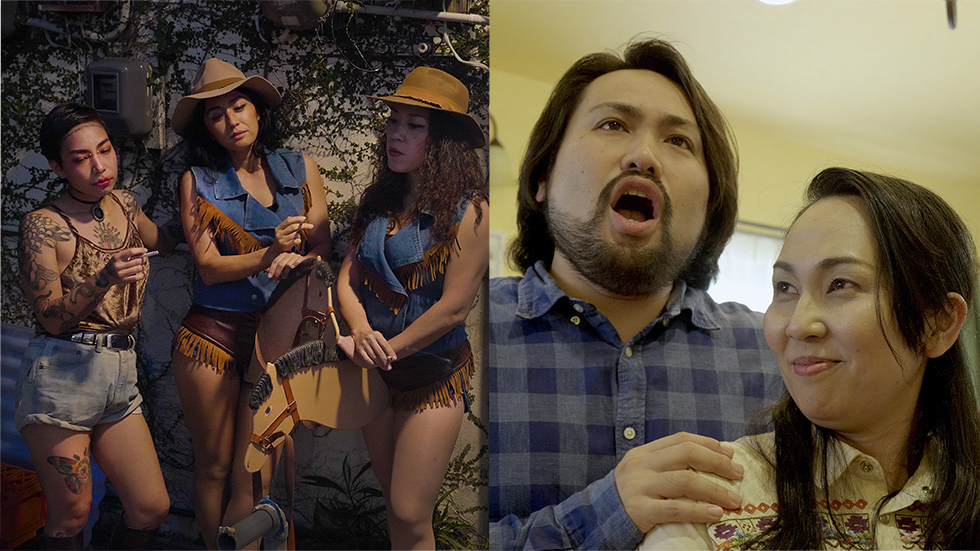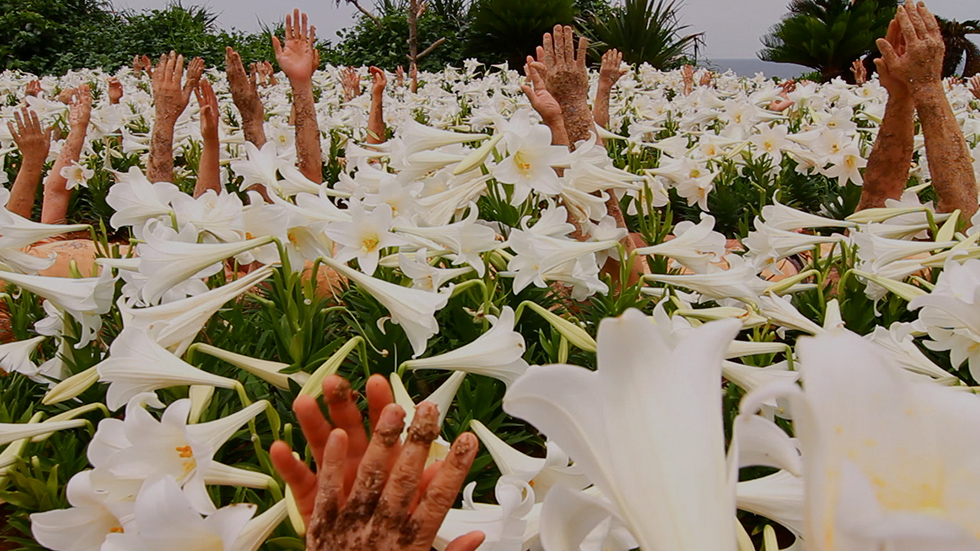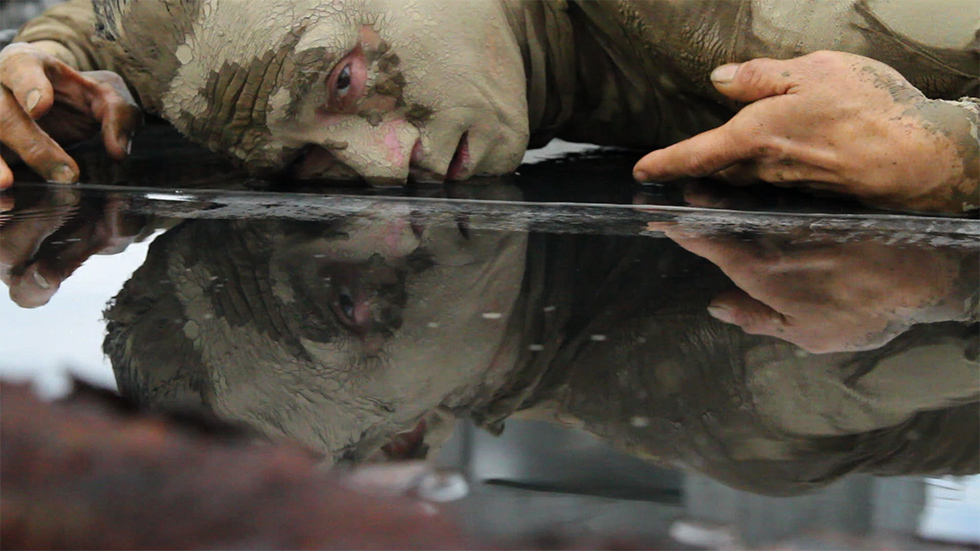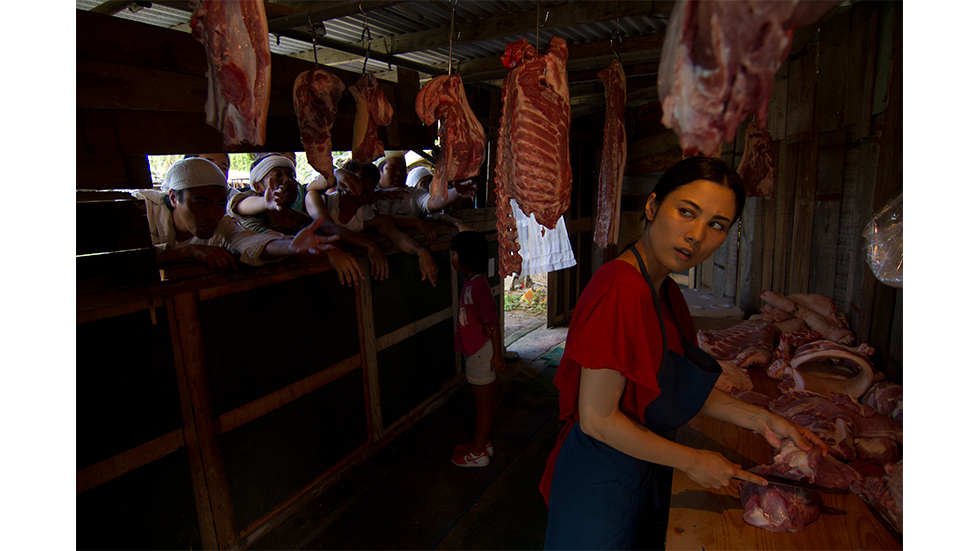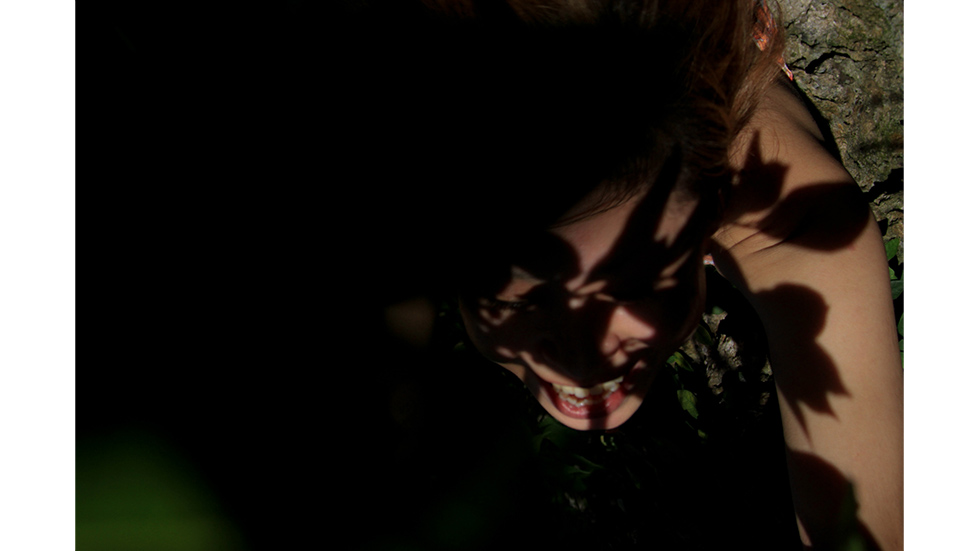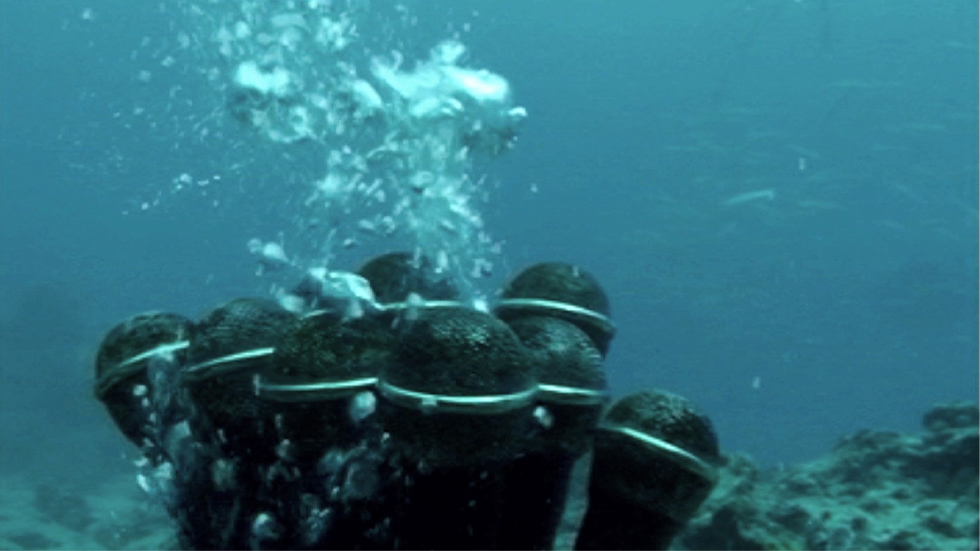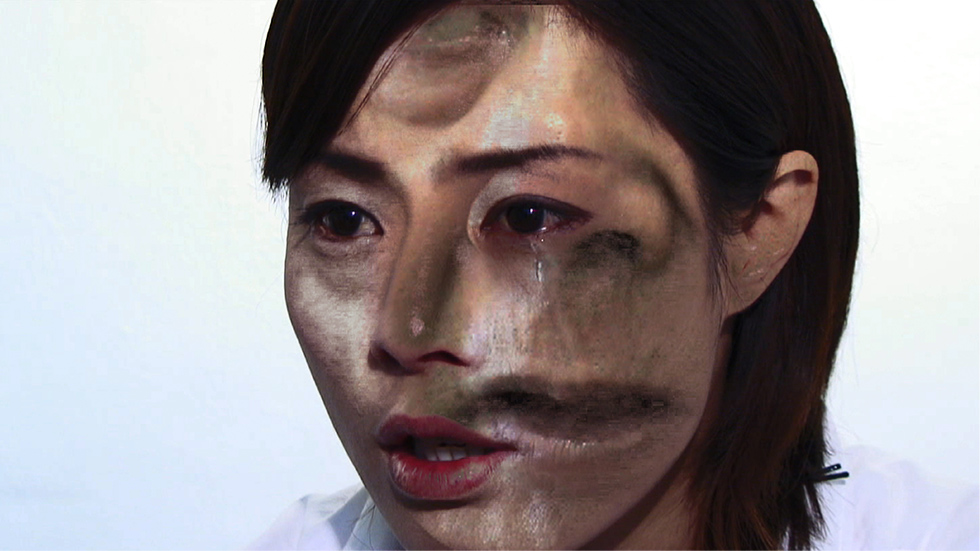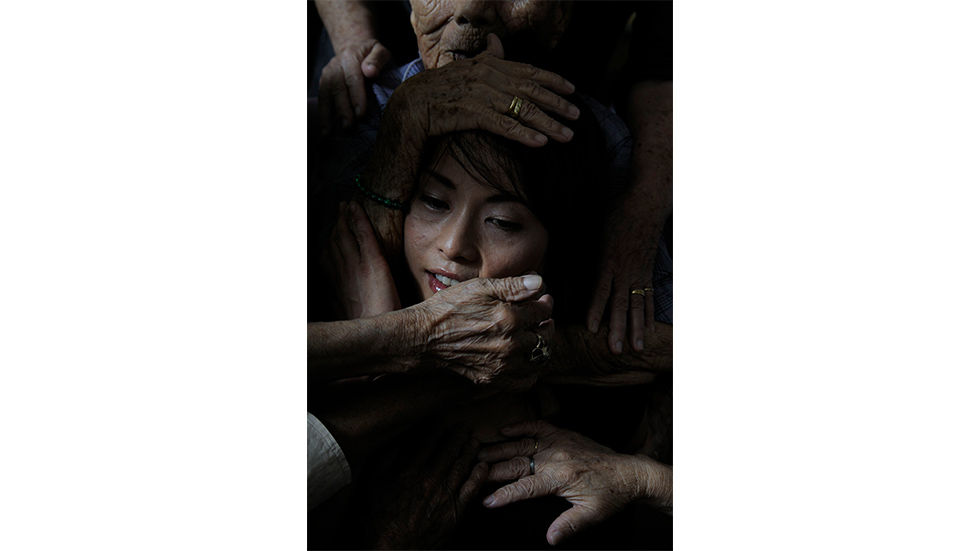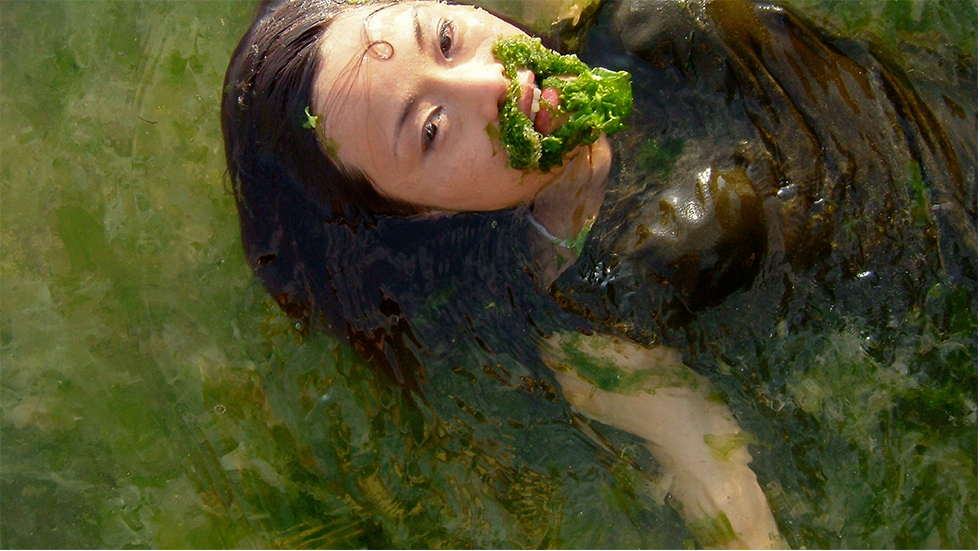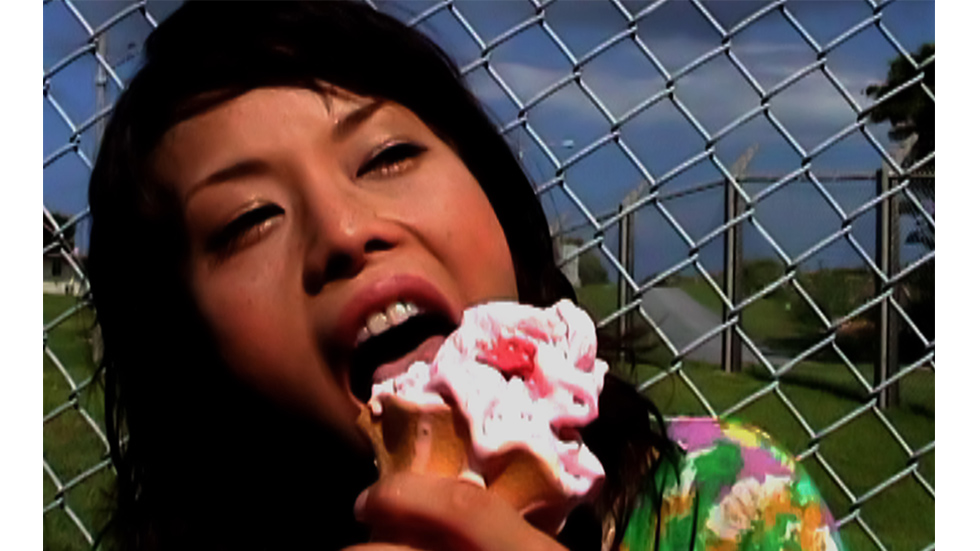Interview with an award winner
TCAA 2020-2022
YAMASHIRO Chikako
Yamashiro Chikako is still based in Okinawa, where she was born and brought up, as the base for her artistic activities. Using her own body as the medium through which to pursue the unique and complex historical and political problems of Okinawa, she has created photographic and video works in which she deeply immerses herself in the world of her own works until she internalizes the themes.
In recent years Yamashiro has ventured beyond the situation in Okinawa, and works on her creations while searching for the voices, bodies and souls of people left behind in the Southeast Asian region. She continues to attempt to create visual expressions that maximize the full force of poetic photography and video, performance, stories and song, covering the themes of the identity of the oppressed, the border between life and death, and the transitions of historical memories.
As was the case last year, the selection process of the award was once again conducted online amid the state of worldwide pandemic. The fact that overseas travel and movement in general has become difficult is exerting a considerable impact upon the award recipients’ creation of new works. As Yamashiro explains: I haven’t been able to do any overseas research at all, and filming costs have more or less doubled. I have to prepare individual rooms for the performers, take desperate measures with weird costumes to try to disguise the fact they are wearing face masks, and on and on. I’m faced with the problem that I can’t adopt a normal shooting style for the story that has been created, but just being able to continue creating in such circumstances is helping to alleviate my anxiety. I regard winning the TCAA as a sort of voice telling me I mustn’t give up, and should carrying on creating my work. I was also vastly encouraged by the stance of the award organizers who did not cease to pursue cultural and artistic activities and continued to do their level best.
The work that has come to be Yamashiro’s representative piece in recent years is Chinbin Western – Representation of the Family, created and released in 2019. It is a masterpiece that has had a searing impact on those who have watched it upon its screening in various places. Yamashiro’s video works always pay intricate attention to the music used in them, and sometimes it has served the role of magically awakening indigenous group memories.
In Chinbin Western, with its operatic polish, music plays a vital key role to an extent even further than hitherto. Those playing the lead roles include a tenor with a beautiful voice and actors and actresses from the Okinawan theater. Taking as its stages an eat-in kitchen with a real sense of everyday life, a cowboy move-like saloon and a desolate open mining pit, the sonorously lucid voices carry along the story. The tsurane Ryuka (narrative songs unique to the Okinawan islands) fuse seamlessly with operetta music, exquisitely expressing the ripped apart identity conflict of the characters.
According to Yamashiro: There is a flow in the creation of a work, a flow that is intricately linked. During filming I can see a vision of the next work approaching, and this constantly repeating cycle is a real fortune for me. Around the time I was filming Mud Man I pursued voices and perceived the voice of memories. In Chinbin Western – Representation of the Family, I felt a wish to speak with my own voice and tell our story. If you get caught up in the vast historical flow of Okinawa you can end up getting so transfixed that there’s no going back. Over the space of about ten years, experiencing both the joy and the pain associated with the tidal force of Okinawa’s history, I myself and many other people who live here finally started to speak in their own voices. Nonetheless, the words don’t come all of a sudden. When I couldn’t say what I wanted to say I was able to create output by adding songs, which make it easier to express subtleties. It’s a work created with a reliance on the power of song.
Making Okinawa her base, Yamashiro has created her art while living together with people who have diverse views of history and visions. While maintaining an awareness of the nature of being an involved party inherent in each and every one of the fellow denizens around her, the process of turning the problems Okinawa grapples with into works of art surely involves delicate subtleties that are beyond the imagination of Japanese people living outside of Okinawa. One realizes that in all of Yamashiro’s previous works she follows a method using the subtlest of touches to circumvent making any expressions that might exhibit her own claims and thoughts in an easily understood manner.
As she explains: Okinawa is a little island, so right from the old days people have had a tendency to mutually take care in order not to clash with each other about their real opinions on political matters such as the solicitation of new US military bases or ports and so on. As I share a certainty that anybody, whatever their position, loves their homeland and its seas, I want to create works that address the very essence of the things based on that trust. Furthermore, there are people in many nations and regions who live under the influence of the scars left behind by war and history, and fissures are appearing in various places under this state of the ongoing COVID-19 pandemic. I think that asking questions to people outside of Okinawa and overseas too through the highly abstracted language of art makes the subject more accessible.
The mining belt used as a location for Chinbin Western is a mountainous area that has been exploited to acquire material for coastal land reclamation over a period of 65 years, and the people who had lived there for the past 600 years vacated the place. It is said that the remaining cluster of around ten households will also have disappeared within the next 20 years. The Okinawan companies who contributed to the lives of Okinawan residents by building residential land and roads to restore the island after the Second World War are now destroying the environment of their own homeland to build US military bases. Yamashiro says that it was from this absurd landscape that she gained inspiration for the next work she will embark upon: The place is not at all like Okinawa, and looks more like somewhere in the Californian desert. While I was researching the area a school bus full of small children appeared from over the mountains. It took me by surprise that there should be children in a place like this, and from there on my image of my work expanded. The sudden appearance of people leading their everyday lives from the depths of a mountain that I thought had long been a wasteland. That emotional moment made me want to create a story tracing the daily lives of those people.
The interests of Yamashiro, who gave birth to her own child last year, are concentrated on the younger generation from infants to those in their twenties. Divorce and poverty rates are high in Okinawa. I want to explore that area I have not yet approached, the area of the fundamental factors behind these high divorce and poverty rates and the structure of this chain, she explains. As a work enters the world of fiction my interest in a cinematic approach increases. But making a film is not exactly my aim. I want to use performance borrowed from the power of the cinema in my videos as art, and swing back and forth across the boundaries between cinema and video as art. Amid this I’d like to explore dialog-based drama, and try to challenge myself a little more in that area. At the moment I’m studying to try and find a breakthrough point.
Yamashiro will be unveiling another new work called Reframing at the Tokyo Photographic Art Museum this summer. In this work, after a five-year gap she once again features the dancer and performing artist Kawaguchi Takao who she invited to Okinawa and filmed for her 2015 work The Beginning of Creation: Abduction/ A Child. Yamashiro says that Kawaguchi will share the performance of the story’s main characters with another dancer, Jareo Osamu.
Yamashiro continued to think deeper after finishing filming and going through the time-consuming editing work. She says that she felt that she had to devote much time and search during the editing stage for the motivation that has flown uninterruptedly through the creation of her work over the past few years – find her own voice, put it to music, and explore her own internal movement as it tries to return to a trembling body that does not now rely on words.
Yamashiro uses the flesh and bodies of herself and others as a medium to reveal the memories, written in invisible ink, of the oppression and pain that transcend time and space and are ubiquitous in our world, and to recapture them. This physicality in her expressions, while blurring the borders between reality and imagination, documentary and fiction, this life and the afterlife, individuals and society, one’s own affairs and those of others, can also be described as a vital factor in the erecting of solid bridges between these elements. There is much to be expected of the future developments in the work of Chikako Yamashiro, an artist who is attempting to further expand the scale of her physical expression.
interview, text: SUMIYOSHI Chie
